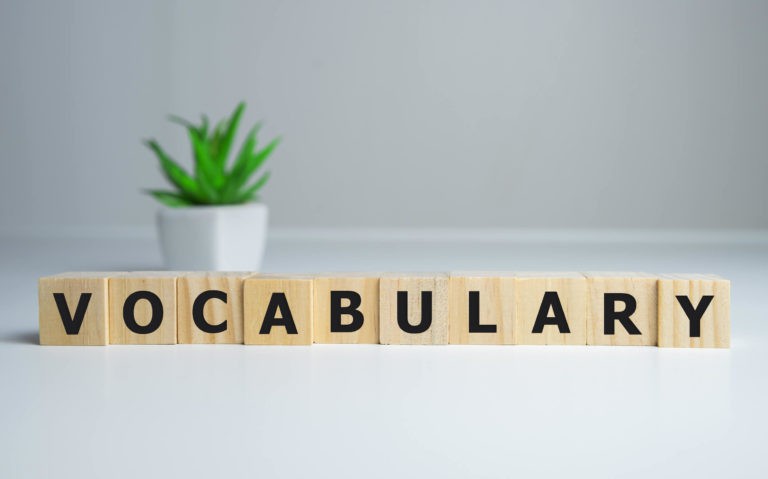A person’s vocabulary is primarily increased through conversation, reading, and teachable moments. When we think about the number of words we use to communicate with children from the moment they are born, we are helping them build a solid foundation in their vocabulary development.
Research has indicated that by the time a child is three years old, there is a thirty million word gap between a child who grew up in poverty and a child who grew up in a higher-income household. When parents and teachers consider the words they are exposing children to through books, dialogue, and experiences, a child’s vocabulary significantly increases. What are some ways to develop vocabulary further?
How Teachable Moments Increase Vocabulary Development
Vocabulary development can be significantly increased through listening. Conversations and experiences are powerful ways to create teachable moments that support vocabulary development. When we consider the choice of words that we use in conversation such as the word elaborate instead of explain, we are increasing a child’s word choice, which increases their vocabulary.
Experiences like field trips or family trips to an aquarium or new cities also increase our knowledge of vocabulary terms. Imagine a trip to a museum where a tour guide leads you from one exhibit to the next providing information through new vocabulary words related to a specific topic or theme. These added terms are now officially added to your schema, which greatly supports your vocabulary development.
How Reading Increases Vocabulary Development
Once a reader can decode any word in a text, the next step is to understand the meaning of the word and how it relates to the theme or main idea of the book and supports comprehension. Whether an adult is reading to a child or a child is reading to themselves, vocabulary is significantly increased through reading. Readers are able to use their background knowledge or schema to figure out how a particular vocabulary word is used in the text. Readers are also able to use context clues and illustrations or photographs to determine the meaning of unknown words.
Understanding how the definition of multiple words or homophones in text is used is a good indicator of someone’s vocabulary knowledge. The more exposure a reader has to books and articles across genres, the more their vocabulary knowledge increases. And as more repetition of words appears in text, the more likely the word is added to someone’s oral and written vocabulary.
How to Increase Vocabulary in the Classroom
Read Aloud
Using the dictionary as a word reference tool to understand meaning of words is a good skill to have when it comes to increasing vocabulary; however, it is not the best way to increase vocabulary in the classroom. In fact, looking up random words in the dictionary and writing the definition of each word is not a research-based practice to increasing a student’s vocabulary development. Implementing time during the instructional day for read-aloud experiences, shared reading experiences, and independent reading time does increase vocabulary in the classroom.
Teachers can determine what word knowledge students already have in their schema by asking questions about vocabulary during read-aloud experiences. When teachers model how to figure out the meaning of three to four unknown words during guided reading or shared reading, students begin to practice the strategy on their own. While teachers can never predict which vocabulary words a child does not know, they can teach students how to use context clues to help figure out what each unknown word means. Teaching students how to become a reading detective is a powerful way to increase engagement and vocabulary development. This practice can be used during independent reading and when taking assessments.
Teach New Words through Example
Teachers can also consider the vocabulary they use in the classroom to support a child’s growth in word knowledge and meaning. Using words like corridor instead of hallway, expectations instead of rules, or vertical instead of up and down increases a students’ vocabulary development in a practical way. Creating a content vocabulary wall to highlight new developmentally appropriate vocabulary words in reading, math, science, and social studies is another way to support vocabulary instruction in the classroom.
“Text talk” is the idea that connects vocabulary words to text. In fact, many classrooms display book covers with a curated list of five vocabulary words that relate to the overall theme or main idea of the book. Once students learn new vocabulary words, whether they are content-oriented, adjectives, verbs, or words that pertain to a certain subject matter, they should be encouraged to use the words in their writing as well.
Visual
Vocabulary increases as reading levels increase, and vocabulary development by age looks different. In primary grades, children should practice classifying and sorting words to increase vocabulary development. An example of this would be comparing fruits and vegetables or farm animals and wild animals. Since a child’s oral vocabulary is better than their reading and writing vocabulary at this age, using pictures in a book before reading to understand vocabulary is a strategic way for students to be able to independently read the words. Ask children what they see in the pictures and create a story board to document the words they say that will appear in print.
The popular game Scattergories forces players to expand upon their vocabulary to win. For example, if the prompt says to select a zoo animal that starts with the letter b, an easy answer is bunny or bear. However, the winner would most likely be the player who said baboon, a higher level vocabulary word. Teaching prefixes, suffixes, Greek roots, and Latin roots in the upper grades also increase a student’s vocabulary development. When a variety of experiences are created in the classroom to support vocabulary through text, a student’s vocabulary development continues to increase each year.




